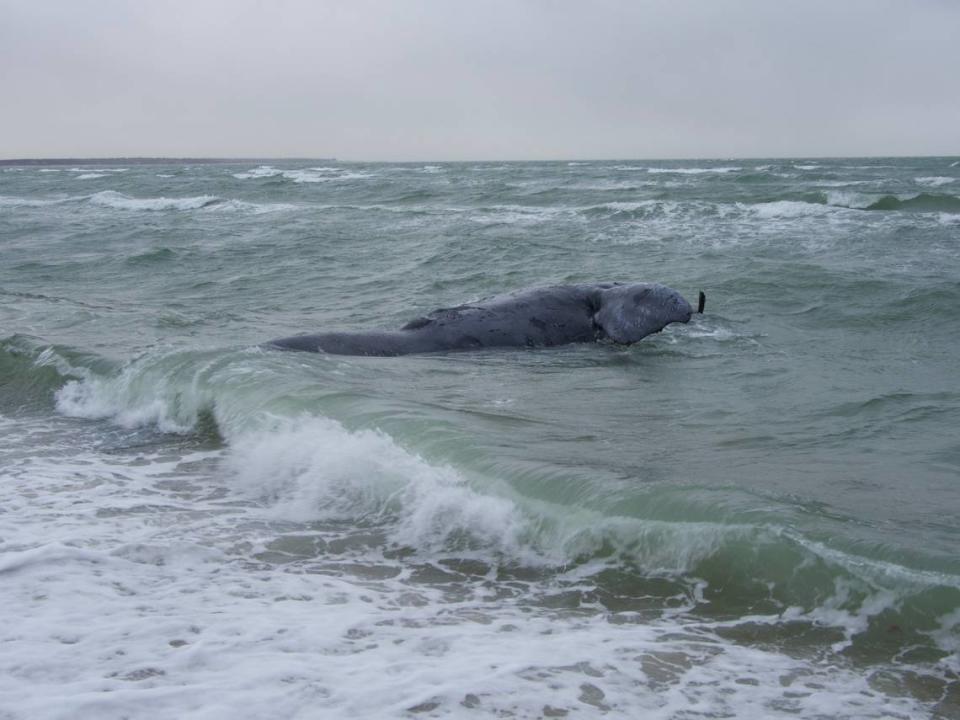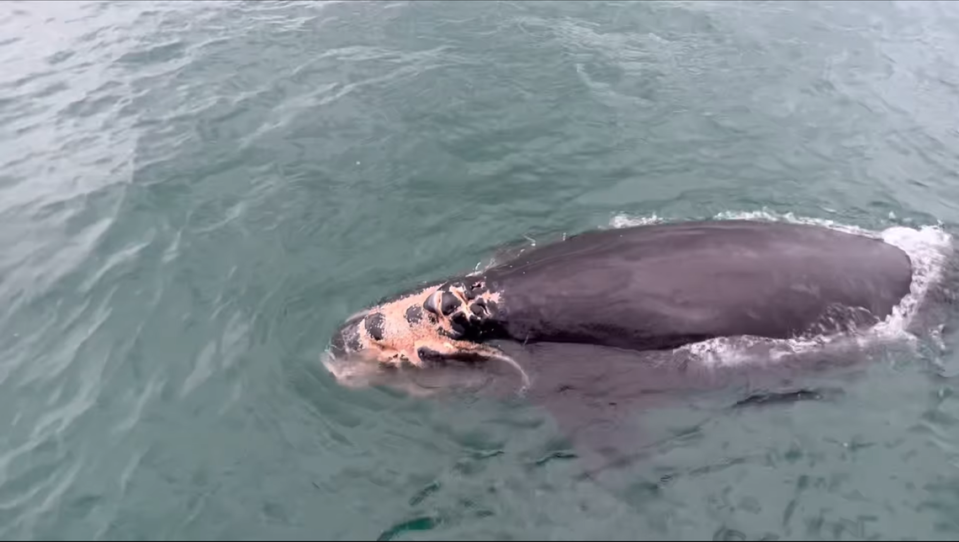Young right whale found dead near Savannah. It’s another loss for the endangered species
A dead juvenile North Atlantic right whale was seen Tuesday, floating offshore of Savannah, Georgia, according to the National Oceanic and Atmospheric Administration.
The whale, born in 2022 to mother Pilgrim, is the 38th mortality of the endangered species in the ongoing Unusual Mortality Event.
On Wednesday, a Clearwater Marine Aquarium Research Institute aerial survey team found the juvenile’s carcass about 20 miles off Tybee Island, Georgia. Shortly after, the Georgia Department of Natural Resources attached a satellite tag, and took photos and samples of the young mammal for identification purposes.
Sharks have heavily scavenged the whale’s carcass, NOAA reported.
NOAA Fisheries and other groups plan to review logistical options and determine whether a tow to shore or necropsy is possible based on weather and the whale’s condition, the administration said.
The juvenile right whale’s death comes about two weeks after a female North Atlantic right whale was found dead near Joseph Sylvia State Beach on Martha’s Vineyard, Massachusetts, on Jan. 28. That whale had rope entangled around and embedded in her tail.
Recently, New England Aquarium’s Anderson Cabot Center for Ocean Life reviewed images of the dead right whale and determined it was the only known calf of Squilla, according to NOAA. The whale was born during the 2021 calving season. NOAA Fisheries concluded the rope was consistent with that used in Maine state water trap/pot buoy lines.

In early January, a calf of the first mother-baby right whale pair spotted of the season was struck by a vessel in the Atlantic off the coast of Edisto, South Carolina. The baby’s injuries showed propeller wounds on its head, mouth and left lip.
NOAA Fisheries biologists preliminary determined the injuries met “serious injury” criteria and were consistent with a vessel strike. Biologists said Jan. 10 that the calf was likely to die.
On Feb. 1, the calf and its mother, Juno, were seen via aerial and vessel surveys about 23 miles east of Sapelo Island, Georgia. Researchers observed apparent successful nursing, NOAA said. But because of the severity of the calf’s injuries, NOAA said the long-term prognosis for the calf is still considered poor.

Up against the odds
This year alone already shows the harsh realities and constant threats to North Atlantic right whales.
Pregnant right whales travel down to waters off the East Coast to give birth in the winter. The pairs then make their way back up to the Northeast for feeding grounds. Throughout their journey, the mammals are met with serious challenges. Part of the journey weaves through heavily industrialized waters with busy shipping lanes, and commercial pot/trap lobster and snow crab fisheries.
Research points to boat strikes and entanglement as the leading cause for the rapidly decreasing North Atlantic right whale population. There are an estimated 356 of this species remaining.
Current federal law says that all vessels 65 feet or greater must travel at 10 knots or less between Nov. 1 and April 30 in “Seasonal Management Areas.” NOAA proposed changes in 2022 that would apply speed restrictions to all vessels 35 feet and greater.
While NOAA and advocates push to strengthen the speed-reduction law, research shows that many boaters go against current regulations. The law has designated spots — Seasonal Management Areas — off the coasts of northeast Florida, Georgia, South Carolina and North Carolina where speed restrictions apply.
Charleston and Savannah harbors, included in the Seasonal Management Areas, have compliance rates “consistently below 5%,” according to marinewhale.com.
“This population is on the precipice of extinction,” Sarah Sharp, an animal rescue veterinarian with the International Fund for Animal Welfare, recently told the Island Packet. “We cannot wait seven years. We cannot wait three years. We cannot wait one year. We have to act now.”

